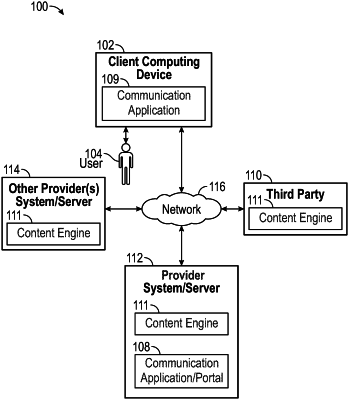| CPC G06F 40/30 (2020.01) [G06F 40/166 (2020.01); G06N 5/04 (2013.01); G06N 20/00 (2019.01); H04L 51/046 (2013.01)] | 20 Claims |

|
1. A computer-implemented method comprising:
training, by at least one processor, a natural language generation (NLG) machine learning model on customer data derived from a plurality of customers;
receiving, by the at least one processor, communications associated with the plurality of customers, the communications comprised a plurality of customer messages;
determining, by the at least one processor, a message type, from among a plurality of message types, for each message of the communications,
wherein the plurality of message types comprises a first message type and a second message type;
wherein the communications comprise the first messages of the first message type and second messages of the second message type
splitting, by the at least one processor, the first messages of the first message type into a first set of subcomponent text sections;
splitting, by the at least one processor, the second messages of the second message type into a second set of subcomponent text sections;
predicting, based on the plurality of customer messages in combination with conversion event data pertaining to the plurality of customer messages, a set of predicted customer preferences for the plurality of customers;
analyzing, by the at least one processor, via the NLG machine learning model, the first set and the second set in combination with the set of predicted customer preferences to generate a plurality of semantic numerical scores comprising a predicted effectiveness for each respective subcomponent text section, wherein each respective semantic numerical score is based on an evaluation of each respective subcomponent text section in a respective semantic category of a plurality of semantic categories and the predicted effectiveness comprises predicted conversion rates for messages that follow the set of predicted customer preferences,
wherein the plurality of the semantic categories comprises at least three semantic categories are selected from a sentiment category, an emotion category, a perceived message type category, a semantic relatedness category, a feeling category, a tone category, a perception category, a micro structure category, and an emotional intelligence category;
determining, by the at least one processor, at least one impactful semantic category for a target audience by selecting at least one semantic category corresponding to at least one semantic numerical score of at least one subcomponent text section of the first set or the second set that is equal to or higher than a first pre-determined threshold value;
generating, by the at least one processor, via the NLG machine learning model, personalized textual content targeting the audience based on at least one unit of text having a corresponding semantic numerical score in the at least one impactful semantic category that is equal to or higher than a second pre-determined threshold value; and
generating, by the at least one processor, via the NLG machine learning model, at least one personalized communication for transmission to the audience from the personalized textual content; and
updating, by the at least one processor, the NLG machine learning model based on identified interactions between the audience and the personalized communication.
|